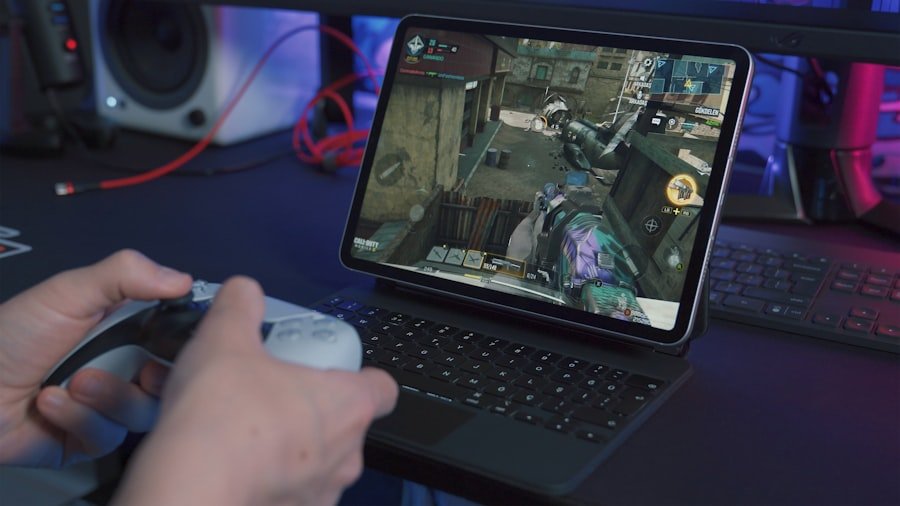Now Reading: The rise of ultra-short games: bite-sized brilliance
-
01
The rise of ultra-short games: bite-sized brilliance
The rise of ultra-short games: bite-sized brilliance

As I reflect on the evolution of gaming, I can’t help but marvel at how far we’ve come. In the early days, gaming was a marathon experience. Titles like “Final Fantasy” and “The Legend of Zelda” demanded hours, if not days, of commitment.
Players would immerse themselves in expansive worlds, unraveling intricate plots and developing characters over long play sessions. I remember spending countless weekends glued to my console, navigating through pixelated landscapes, and feeling a sense of accomplishment after finally defeating a challenging boss. Those long play experiences fostered a deep connection with the characters and stories, creating memories that lingered long after the game was over.
However, as technology advanced and lifestyles changed, so too did the gaming landscape. The rise of the internet and mobile devices ushered in a new era where time constraints became a significant factor for many players. I noticed that my friends and I were increasingly looking for quick bursts of entertainment that fit into our busy schedules.
This shift led to the emergence of ultra-short games—titles designed for quick play sessions that could be enjoyed in just a few minutes. These games often feature simple mechanics and straightforward objectives, allowing players to engage without the commitment required by traditional gaming experiences. The evolution from long play to ultra-short games reflects not only changes in technology but also shifts in our daily lives and how we consume entertainment.
Key Takeaways
- The evolution of gaming has shifted from long play to ultra-short games, catering to the changing preferences of players.
- Ultra-short games are gaining popularity due to their appeal of providing quick, engaging experiences that fit into busy lifestyles.
- Mobile gaming has played a significant role in the rise of ultra-short games, making them accessible to a wider audience on the go.
- Developers are creating engaging ultra-short games by designing for short attention spans and focusing on delivering quick bursts of entertainment.
- Ultra-short games are impacting the gaming industry by attracting new audiences and changing the landscape of casual gaming.
The Appeal of Bite-Sized Brilliance: Why Ultra-Short Games are Gaining Popularity
Instant Gratification on Demand
The appeal of ultra-short games lies in their ability to deliver quick satisfaction without the need for extensive time investment. I find myself drawn to these games when I have just a few minutes to spare—waiting in line, during a lunch break, or even while watching TV. The instant gratification they provide is hard to resist.
Accessibility for All
Unlike traditional games that require hours of dedication, ultra-short games allow me to dive in, enjoy a quick challenge, and walk away feeling accomplished, even if it’s just for a brief moment. Moreover, the accessibility of ultra-short games makes them appealing to a broader audience. I’ve seen friends who never considered themselves gamers become hooked on these bite-sized experiences.
Democratizing Gaming
The simplicity of gameplay mechanics means that anyone can pick up a game and start playing without needing extensive tutorials or prior experience. This democratization of gaming is exciting; it opens the door for new players to explore the medium without feeling overwhelmed. As I engage with these games, I appreciate how they cater to my desire for quick entertainment while still offering engaging content that keeps me coming back for more.
The Role of Mobile Gaming in the Rise of Ultra-Short Games

Mobile gaming has played a pivotal role in the rise of ultra-short games, transforming how I and many others experience gaming. With smartphones becoming ubiquitous, I can access a vast library of games right at my fingertips. This convenience has made it easier than ever to indulge in quick gaming sessions whenever I have a spare moment.
Whether I’m commuting or waiting for an appointment, I can easily pull out my phone and dive into a game designed for short play. The mobile platform also encourages developers to create games that cater specifically to this format. I’ve noticed that many mobile games are designed with ultra-short play sessions in mind, featuring levels or challenges that can be completed in just a few minutes.
This design philosophy aligns perfectly with my lifestyle, as it allows me to enjoy gaming without the need for lengthy commitments. As mobile gaming continues to grow, I believe we will see even more innovative ultra-short games that leverage the unique capabilities of smartphones, further solidifying their place in the gaming landscape.
Designing for Short Attention Spans: How Developers are Creating Engaging Ultra-Short Games
Creating engaging ultra-short games requires a unique approach from developers, one that I find fascinating. They must craft experiences that are not only enjoyable but also capable of capturing players’ attention quickly. I’ve seen developers focus on streamlined gameplay mechanics that allow for immediate engagement.
For instance, many ultra-short games feature simple controls and clear objectives that players can grasp within seconds. This design philosophy ensures that even if I only have a few minutes to play, I can quickly understand what I need to do and jump right into the action. Moreover, developers are increasingly incorporating elements that encourage replayability into their ultra-short games.
I’ve noticed that many titles include randomized levels or challenges that change each time I play, keeping the experience fresh and exciting. This approach not only caters to my short attention span but also motivates me to return for another quick session. By focusing on creating engaging content that can be consumed in small doses, developers are successfully tapping into the growing demand for ultra-short gaming experiences.
The Impact of Ultra-Short Games on the Gaming Industry
The rise of ultra-short games has had a significant impact on the gaming industry as a whole. As I observe this trend, it’s clear that these games are reshaping how developers approach game design and marketing strategies. With their focus on accessibility and quick engagement, ultra-short games have opened up new revenue streams for developers.
Many titles adopt free-to-play models with optional microtransactions, allowing players like me to enjoy the game without upfront costs while still providing opportunities for monetization. Additionally, the success of ultra-short games has prompted traditional game developers to rethink their strategies. I’ve seen established franchises experiment with shorter gameplay experiences or spin-off titles designed for quick play sessions.
This shift not only caters to the growing demand for bite-sized entertainment but also allows developers to reach new audiences who may not have the time or inclination for longer gaming experiences. As ultra-short games continue to gain traction, they are undoubtedly influencing the broader gaming landscape and encouraging innovation across various genres.
The Rise of Casual Gaming: How Ultra-Short Games are Attracting New Audiences

Casual gaming has seen a remarkable rise in popularity, largely fueled by the emergence of ultra-short games. As someone who enjoys both casual and more immersive gaming experiences, I’ve witnessed firsthand how these bite-sized titles are attracting new audiences who may have previously felt alienated by traditional gaming culture. Ultra-short games provide an entry point for those who may not consider themselves “gamers,” allowing them to engage with interactive entertainment without feeling intimidated.
I’ve noticed that many ultra-short games are designed with social interaction in mind, further enhancing their appeal to casual players. Features like leaderboards and multiplayer modes encourage friendly competition among friends and family members, making it easy for anyone to join in on the fun. This social aspect is particularly enticing; it transforms gaming from a solitary activity into a shared experience that fosters connections among players.
As more people discover the joy of casual gaming through ultra-short titles, I believe we will continue to see an expansion of this audience and an evolution in how we perceive gaming as a whole.
The Future of Gaming: Will Ultra-Short Games Dominate the Market?
As I contemplate the future of gaming, I can’t help but wonder whether ultra-short games will dominate the market. Given their growing popularity and accessibility, it seems likely that they will continue to carve out a significant niche within the industry. However, I also recognize that traditional long-form games still hold immense value for many players who crave deep narratives and immersive worlds.
The future may not be about one format overtaking the other but rather about finding a balance between these two approaches. I envision a future where both ultra-short and long-form games coexist harmoniously, catering to diverse player preferences. Developers may increasingly experiment with hybrid models that blend elements from both styles—offering shorter experiences within larger narratives or creating episodic content that allows players to engage at their own pace.
As someone who appreciates both types of gaming experiences, I find this potential exciting; it opens up new avenues for creativity and innovation within the industry.
The Psychology of Short Play: Why Players are Drawn to Ultra-Short Games
The psychology behind why players are drawn to ultra-short games is intriguing to me. In our fast-paced world, where attention spans seem to dwindle by the day, these games offer an escape from reality without requiring significant time investment. I often find myself seeking out these quick experiences as a way to unwind or take a break from daily stressors.
The instant gratification provided by completing a level or achieving a high score taps into our desire for accomplishment and reward. Moreover, ultra-short games often evoke feelings of nostalgia and simplicity reminiscent of classic arcade titles. As someone who grew up playing games in arcades, I appreciate how these modern iterations capture that same spirit while adapting to contemporary sensibilities.
The combination of nostalgia and immediate satisfaction creates an emotional connection that keeps me returning for more—an experience that resonates deeply with many players today.
The Challenges of Creating Compelling Narratives in Ultra-Short Games
While ultra-short games excel at providing quick entertainment, crafting compelling narratives within such limited timeframes presents unique challenges for developers. As someone who values storytelling in gaming, I recognize that creating an engaging plot within a few minutes can be daunting. Developers must find ways to convey meaningful narratives without overwhelming players with excessive information or complex mechanics.
I’ve seen some developers tackle this challenge by focusing on concise storytelling techniques—using visual cues and minimal dialogue to convey emotions and plot points effectively. This approach allows players like me to immerse ourselves in the story quickly while still feeling invested in the characters’ journeys. However, there’s always a risk that brevity may lead to oversimplification or missed opportunities for deeper exploration of themes and character development.
Striking the right balance between brevity and depth is crucial for creating memorable ultra-short gaming experiences.
The Rise of Competitive Ultra-Short Games: How Short Play is Changing the Esports Landscape
The rise of competitive ultra-short games is reshaping the esports landscape in fascinating ways. As someone who enjoys watching competitive gaming events, I’ve noticed an increasing number of tournaments centered around these bite-sized experiences. The fast-paced nature of ultra-short games lends itself well to competitive play; matches can be completed quickly, allowing for more action-packed events that keep audiences engaged.
Moreover, competitive ultra-short games often emphasize skill-based mechanics that reward quick reflexes and strategic thinking—qualities that resonate with both players and spectators alike. I find it exciting to see how these titles are attracting new talent into the esports scene while also providing opportunities for casual gamers to participate in competitive environments without needing extensive time commitments or resources typically associated with traditional esports titles.
The Social Aspect of Ultra-Short Games: How Short Play is Bringing People Together
One of the most delightful aspects of ultra-short games is their ability to foster social connections among players. As someone who enjoys sharing gaming experiences with friends and family, I appreciate how these bite-sized titles encourage collaboration and competition in ways that traditional long-form games may not always facilitate. Whether it’s challenging friends on leaderboards or teaming up for cooperative missions, ultra-short games create opportunities for social interaction that enhance the overall experience.
I’ve found that playing ultra-short games together often leads to laughter and friendly banter—moments that strengthen bonds between players while providing entertainment value. This social aspect is particularly appealing; it transforms gaming from an isolated activity into a shared experience filled with camaraderie and connection. As more people discover the joy of playing together through ultra-short titles, I believe we will continue to see an increase in social gaming experiences that bring communities closer together.
In conclusion, as I navigate through this evolving landscape of gaming—from long play experiences to ultra-short bursts of entertainment—I am excited about what lies ahead. The rise of ultra-short games reflects not only changes in technology but also shifts in our lifestyles and preferences as players. Whether through mobile platforms or competitive environments, these bite-sized experiences are reshaping how we engage with interactive entertainment while fostering connections among diverse audiences worldwide.
In a recent article on the evolution of gaming AI’s impact, the discussion of how artificial intelligence is shaping the future of gaming aligns with the trend of ultra-short games. As developers continue to innovate and push boundaries in game design, AI technology plays a crucial role in creating immersive and engaging experiences for players. The rise of ultra-short games is just one example of how the gaming industry is constantly evolving to meet the demands of modern gamers.



























